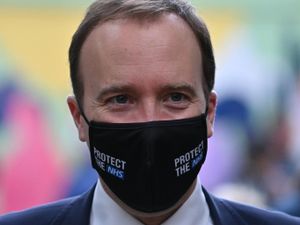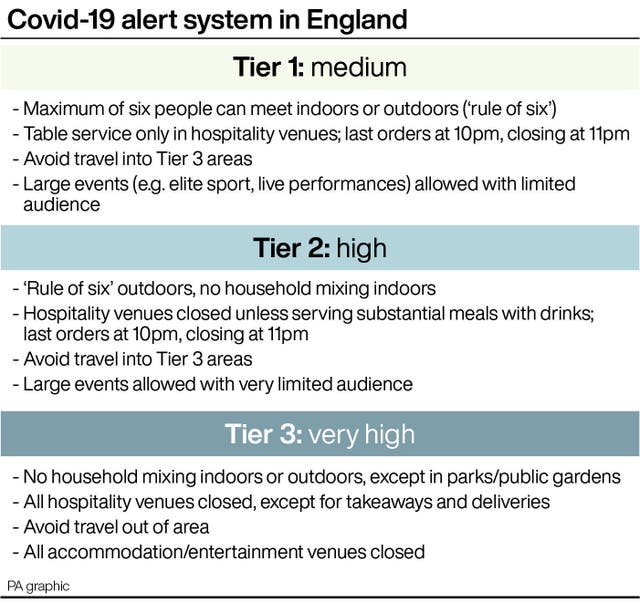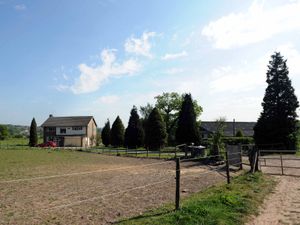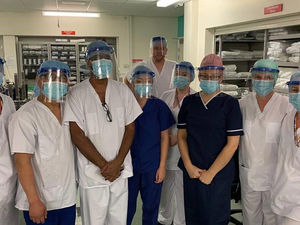Covid-19: Local authorities in England to discover their post-lockdown tiers
Health Secretary Matt Hancock will make an announcement in Parliament on Thursday.

The Health Secretary is to set out which tier each local authority in England will fall under after the end of the national lockdown.
Matt Hancock will make the announcement in Parliament on Thursday after the Government set out its Covid-19 “winter plan” earlier this week.
Each area will be placed into one of three tiers when lockdown ends on December 2 – but the system has been toughened from the previous regime, meaning more authorities will move into the higher tiers.
Areas which make progress in slowing the spread of the virus could still be moved down a tier before Christmas, however, with the first review of the allocations due to take place by December 16.
On Wednesday night reports suggested there would be few areas in England placed in Tier 1, with The Times reporting parts of eastern England and remote areas in Cornwall and Cumbria are expected to be allocated the lightest measures.
Meanwhile London was expected to go in Tier 2 along with the majority of the country.
Mr Hancock said: “Thanks to the hard work and sacrifice made by people up and down the country, we are able to move out of national lockdown and into more targeted local, tiered restrictions.

“I know for those of you faced with Tier 3 restrictions this will be a particularly difficult time but I want to reassure you that we’ll be supporting your areas with mass community testing and extra funding.
“By following the rules together we can get out of these tough measures.”
The Department of Health said decisions on tier levels would be based on a number of factors, including case detection rates in all age groups and, in particular, amongst the over 60s.
How quickly case rates are rising or falling will also be taken into account, as will local pressure on the NHS, including current and projected capacity.
The final decisions will be made by Prime Minister Boris Johnson at the Covid Operations Committee, the Government said.
Areas placed in Tier 3 will be offered support from NHS Test and Trace and the Armed Forces to deliver a six-week rapid community testing programme, making use of rapid lateral flow tests which give results within an hour.

Liverpool City Region mayor Steve Rotheram said he hoped the area – which was the first to enter the highest tier last time – would not return to Tier 3 restrictions.
He said: “The progress we’ve made since we were put in Tier 3 is remarkable – we’ve gone from having two areas with infection rates of about 750 per 100k to 180 across the city region.”
Mayor of Greater Manchester Andy Burnham said it was “more likely than not” his area would be made subject to Tier 3 restrictions.
He said although infection numbers in Greater Manchester were still high, the rates were falling.
He added: “If things continue in this direction at the rate at which we are seeing change in Greater Manchester, I would want to ask the Government for a serious review of Greater Manchester’s position at the first review of tiering arrangements which is scheduled to take place two weeks from now.”
Meanwhile, Lancashire’s council leaders have submitted a proposal to the Government to divide the county into two different tiers when the lockdown ends next week.
A request has been made for Hyndburn, Rossendale, Burnley, Pendle and Preston to go into Tier 3 restrictions while Fylde, Wyre, Lancaster, Chorley, South Ribble, Ribble Valley and West Lancashire would go into Tier 2.
And London mayor Sadiq Khan said it would be the “right and sensible decision” for the capital to be placed in Tier 2, as he warned that Tier 3 would be a “hammer blow” to businesses.
The reimposition of the tier system in England comes as scientists warned easing coronavirus restrictions over Christmas could lead to a third wave of the pandemic and another lockdown.
The Prime Minister urged the public to “think carefully” over the festive period after it was confirmed that three households will be able to form a Christmas “bubble” from December 23 to 27.
Professor Graham Medley, an expert in infectious disease modelling at the London School of Hygiene & Tropical Medicine, said the relaxation of restrictions over the festive period could lead to more people being admitted to hospital and further lockdown measures in the new year.
Meanwhile, Government figures showed a further 696 people had died within 28 days of testing positive for Covid-19 as of Wednesday, with the UK total now standing at 56,533.
A further 18,213 lab-confirmed cases of coronavirus were reported on Wednesday.
In Scotland, Nicola Sturgeon has said rules allowing people to meet up at Christmas are likely to be tightened when they are set out on Thursday.
She said: “The expectation should be that the guidance will probably look to tighten around the edges rather than further expand and that will be true with the travel window of opportunity as well – we want to limit that window, not expand it.”
The Welsh Cabinet is also expected to meet to decide whether further restrictions similar to the English tier system will be needed before Christmas, although a decision is not likely to be announced until Friday.
In Northern Ireland, tougher lockdown restrictions will be introduced from Friday, with pubs, restaurants, non-essential retail and close contact services to close for a fortnight.





